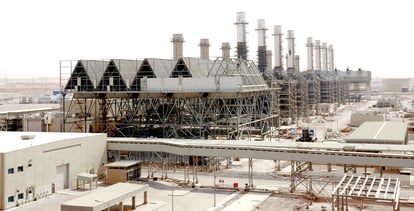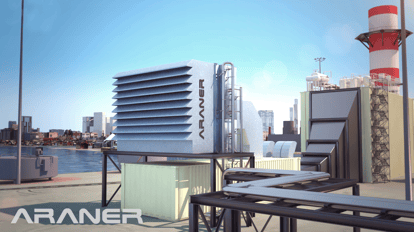2019 is already halfway over, and with it, many trends in the Power Generation Industry seem to be underway. Natural gas-fired power plants continue to be on the rise with natural gas being readily available and reasonably priced in many areas of the world. Natural gas is expected to continue to have a steady market share in the electric power production industry for at least the next 15 to 20 years. Natural gas is widely available, relatively affordable, and emits 50 to 60% less CO 2 than traditional coal-fired power plants. Gas turbine power plants also require less capital investment than a traditional coal-fired plant with the same capacity. The continued global rise in the demand for power has many power producers looking for ways to maximize capacity and increase the efficiency of the gas turbine, for both existing and new plants alike. Let’s take a quick look at the differences between power plants that use gas turbines and combines cycle power plants and the industry solution that is becoming popular: Turbine Inlet Air Cooling.
Gas Turbine & Combined Cycle Power Plants
 Figure 1: Repowering a Power Plant
Figure 1: Repowering a Power Plant
Natural gas-fired plants are either simple cycle gas turbine plants or combined cycle plants. A simple cycle plant is a gas turbine connected to a generator, when the gas turbine fires and rotates it turns the generator, thereby generating power. Combined cycle plants consist of a simple cycle gas turbine, but the heat and off-gases from the combustion are routed through a heat exchanger to produce steam. The steam is then used to drive a steam turbine and generator to produce more power. The simple-cycle plant is less efficient than the combined cycle plant, but they can basically generate power on demand they don’t require time to fire up like a coal-fired plant, a nuclear plant, or even a combined cycle plant. Simple cycle plants are often used in situations where the demand may spike unexpectedly, as they can be turned on when demand calls for more power or off when it’s no longer needed.
Turbine Inlet Air Cooling Solution
 Figure 2: ARANER TIAC system
Figure 2: ARANER TIAC system
In areas where ambient temperatures are high, one potential solution is Turbine Inlet Air Cooling (TIAC), which provides cooled air to the intake of the gas turbine to restore the power output to its rated capacity or better. In the warm climates of the world, this is especially effective since the high temperatures which lower output and efficiency of the gas turbines also coincide with increased demands from air conditioning. A combined cycle plant equipped with TIAC can provide peak capacity at combined cycle efficiencies and lower emissions than a peaking plant, reducing overall emissions. TIAC systems can also be fueled by waste heat from the turbines themselves, further increasing the overall efficiency. Furthermore, TIAC systems can be adjusted for temperature, actual operating conditions, and other factors which may affect plant-specific performance, thereby increasing the overall operational flexibility. TIAC systems offer many benefits, especially in warm climates, the main one being the increase in both efficiency and capacity. The cost to install TIAC is less than that required for a new turbine or a peaking plant, making them a cost-efficient choice as well. TIAC systems are an increasingly attractive option to power producers and others depending on gas turbines, as a cost-effective option for increased capacity. For an expanded look at Turbine Inlet Air Cooling industry trends through 2022 consult ARANER’s expert reference ebook.
Conclusion
With so many changes occurring in the Power Generation industry, power plant operators, providers, and industry players need to be sure that the solutions they’re implementing and investing in today are going to reliable and cost-effective in the future. Natural gas and gas turbine plants are already serving as an alternative to traditional coal-fired plants. With the changes in the Power Industry, also come big opportunities to maximize capacity and increase efficiency for existing plants and new builds. Turbine Inlet Air Cooling is already playing a big role in this aspect for gas turbine power plants, and will only continue to become more popular in the future. To discover how TIAC technology can be implemented into your plant or project, contact ARANER’s experts today and discover the benefits of Turbine Inlet Air Cooling.










